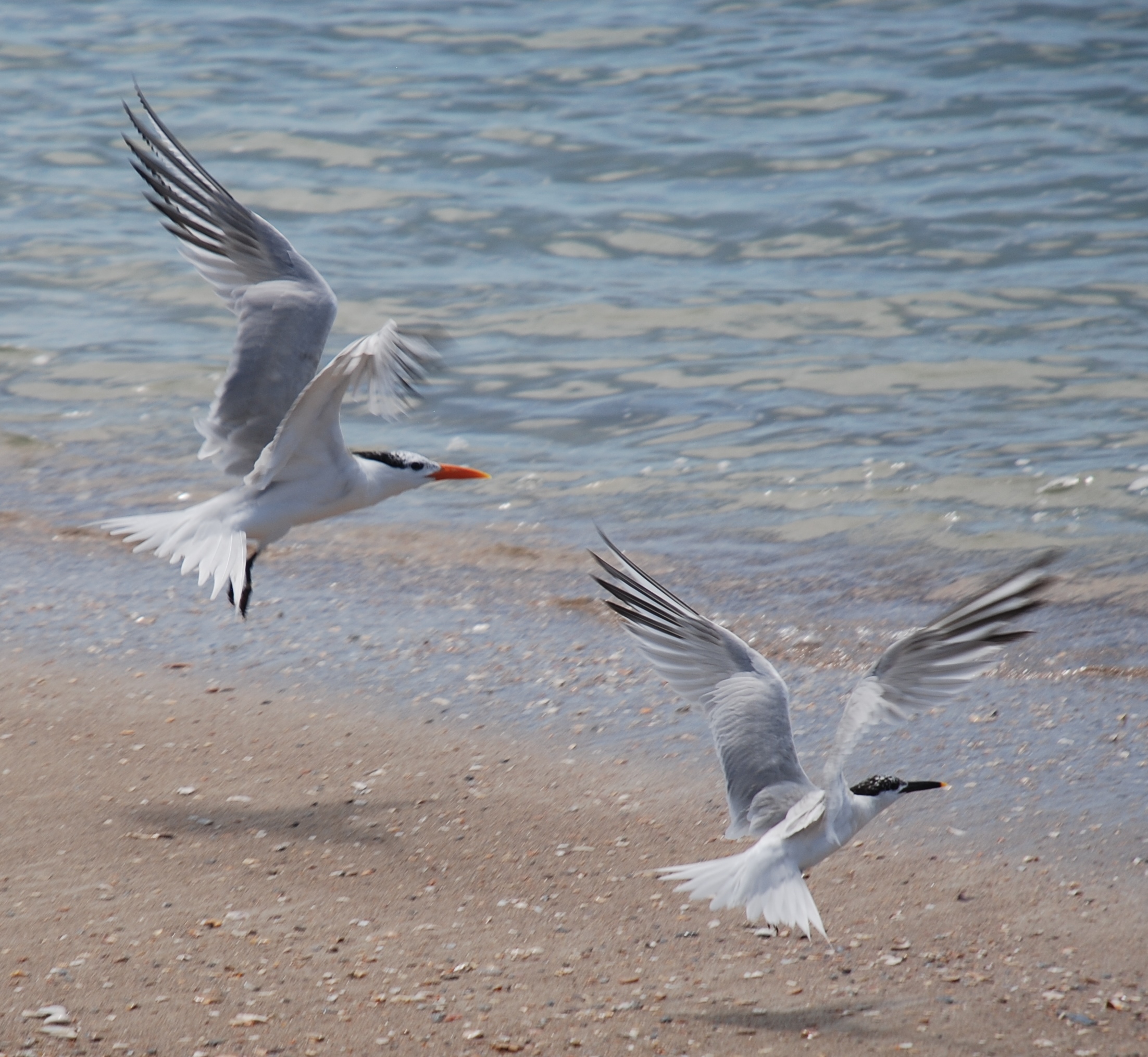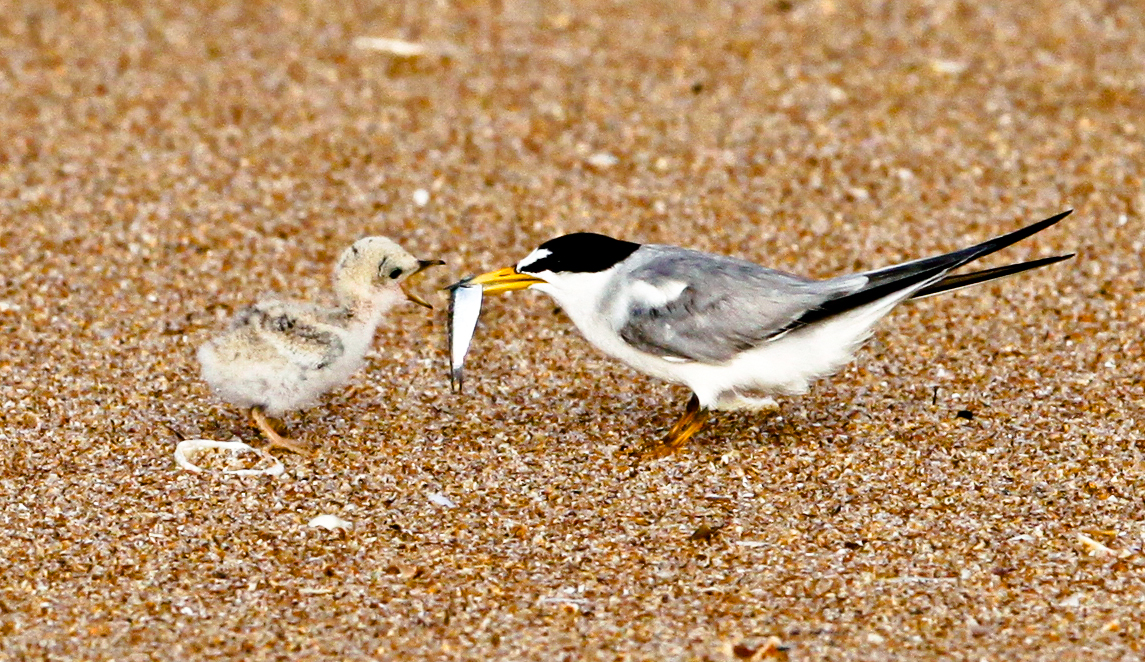|
Meads Bay Pond
Meads Bay Pond is a wetland in Anguilla, a British Overseas Territory in the Caribbean Sea. It is one of the territory's Important Bird Areas (IBAs). Description The pond is a narrow, 21 ha brackish lagoon next to Long Bay Village, near the south-western end of the main island. Its north-western shore is separated from Meads Bay by a thin strip of land, a former dune, that carries a road and tourism developments. The substrate is marl on the northern side and limestone on the southern. Vegetation around the pond consists mainly of stands of buttonwood mangroves, with some longspine acacia and grey nicker at the western end. Birds The IBA was identified as such by BirdLife International because it supports a small breeding colony of least terns as well as non-breeding royal tern The royal tern (''Thalasseus maximus'') is a tern in the family Laridae. The species is endemic to the Americas, though strays have been identified in Europe.Buckley, P. A. and F. G. Buckley ( ... [...More Info...] [...Related Items...] OR: [Wikipedia] [Google] [Baidu] |
Anguilla Map
Anguilla ( ) is a British Overseas Territory in the Caribbean. It is one of the most northerly of the Leeward Islands in the Lesser Antilles, lying east of Puerto Rico and the Virgin Islands and directly north of Saint Martin. The territory consists of the main island of Anguilla, approximately long by wide at its widest point, together with a number of much smaller islands and cays with no permanent population. The territory's capital is The Valley. The total land area of the territory is , with a population of approximately (). Etymology The native Arawak name for the island was ''Malliouhana''. In reference to the island's shape, the Italian ', meaning "eel" (in turn, from the Latin diminutive of ''anguis'', "snake") was used as its name. History Anguilla was first settled by Indigenous Amerindian peoples who migrated from South America. The earliest Native American artefacts found on Anguilla have been dated to around 1300 BC; remains of settlements ... [...More Info...] [...Related Items...] OR: [Wikipedia] [Google] [Baidu] |
Vachellia Macracantha
''Vachellia macracantha'' is a species of tree in the family Fabaceae. Its native range spans from southern Florida to South America South America is a continent entirely in the Western Hemisphere and mostly in the Southern Hemisphere, with a relatively small portion in the Northern Hemisphere at the northern tip of the continent. It can also be described as the souther .... References {{Taxonbar, from=Q15545373, from2=Q9566669 Flora of Florida Flora of Central America Flora of South America Trees of Peru Trees of Nicaragua Trees of Puerto Rico macracantha ... [...More Info...] [...Related Items...] OR: [Wikipedia] [Google] [Baidu] |
Wetlands Of Anguilla
A wetland is a distinct ecosystem that is flooded or saturated by water, either permanently (for years or decades) or seasonally (for weeks or months). Flooding results in oxygen-free (anoxic) processes prevailing, especially in the soils. The primary factor that distinguishes wetlands from terrestrial land forms or Body of water, water bodies is the characteristic vegetation of aquatic plants, adapted to the unique anoxic hydric soils. Wetlands are considered among the most biologically diverse of all ecosystems, serving as home to a wide range of plant and animal species. Methods for assessing wetland functions, wetland ecological health, and general wetland condition have been developed for many regions of the world. These methods have contributed to wetland conservation partly by raising public awareness of the functions some wetlands provide. Wetlands occur naturally on every continent. The water in wetlands is either freshwater, brackish or saltwater. The main wetland typ ... [...More Info...] [...Related Items...] OR: [Wikipedia] [Google] [Baidu] |
Important Bird Areas Of Anguilla
Importance is a property of entities that matter or make a difference. For example, World War II was an important event and Albert Einstein was an important person because of how they affected the world. There are disagreements in the academic literature about what type of difference is required. According to the causal impact view, something is important if it has a big causal impact on the world. This view is rejected by various theorists, who insist that an additional aspect is required: that the impact in question makes a value difference. This is often understood in terms of how the important thing affects the well-being of people. So on this view, World War II was important, not just because it brought about many wide-ranging changes but because these changes had severe negative impacts on the well-being of the people involved. The difference in question is usually understood counterfactually as the contrast between how the world actually is and how the world would have be ... [...More Info...] [...Related Items...] OR: [Wikipedia] [Google] [Baidu] |
Royal Tern
The royal tern (''Thalasseus maximus'') is a tern in the family Laridae. The species is endemic to the Americas, though strays have been identified in Europe.Buckley, P. A. and F. G. Buckley (2020). Royal Tern (Thalasseus maximus), version 1.0. In Birds of the World (S. M. Billerman, Editor). Cornell Lab of Ornithology, Ithaca, NY, USA. https://doi.org/10.2173/bow.royter1.01 Retrieved April 17, 2021 Taxonomy The royal tern was described by the French polymath Georges-Louis Leclerc, Comte de Buffon in 1781 in his ''Histoire Naturelle des Oiseaux'' from a specimen collected in Cayenne, French Guiana. The bird was also illustrated in a hand-coloured plate engraved by François-Nicolas Martinet in the ''Planches Enluminées D'Histoire Naturelle'' which was produced under the supervision of Edme-Louis Daubenton to accompany Buffon's text. Neither the plate caption nor Buffon's description included a scientific name but in 1783 the Dutch naturalist Pieter Boddaert coined the binomial ... [...More Info...] [...Related Items...] OR: [Wikipedia] [Google] [Baidu] |
Least Tern
The least tern (''Sternula antillarum'') is a species of tern that breeds in North America and locally in northern South America. It is closely related to, and was formerly often considered conspecific with, the little tern of the Old World. Other close relatives include the yellow-billed tern and Peruvian tern, both from South America. It is a small tern, long, with a wingspan of , and weighing . The upper parts are a fairly uniform pale gray, and the underparts white. The head is white, with a black cap and line through the eye to the base of the bill, and a small white forehead patch above the bill; in winter, the white forehead is more extensive, with a smaller and less sharply defined black cap. The bill is yellow with a small black tip in summer, all blackish in winter. The legs are yellowish. The wings are mostly pale gray, but with conspicuous black markings on their outermost primaries. It flies over water with fast, jerky wingbeats and a distinctive hunchback appeara ... [...More Info...] [...Related Items...] OR: [Wikipedia] [Google] [Baidu] |
BirdLife International
BirdLife International is a global partnership of non-governmental organizations that strives to conserve birds and their habitats. BirdLife International's priorities include preventing extinction of bird species, identifying and safeguarding important sites for birds, maintaining and restoring key bird habitats, and empowering conservationists worldwide. It has a membership of more than 2.5 million people across 116 country partner organizations, including the Royal Society for the Protection of Birds, the Wild Bird Society of Japan, the National Audubon Society and American Bird Conservancy. BirdLife International has identified 13,000 Important Bird and Biodiversity Areas and is the official International Union for Conservation of Nature’s Red List authority for birds. As of 2015, BirdLife International has established that 1,375 bird species (13% of the total) are threatened with extinction ( critically endangered, endangered or vulnerable). BirdLife Internation ... [...More Info...] [...Related Items...] OR: [Wikipedia] [Google] [Baidu] |
Conocarpus Erectus
''Conocarpus erectus'', commonly called buttonwood or button mangrove, is a mangrove shrub in the family Combretaceae. This species grows on shorelines in tropical and subtropical regions around the world. Range Locations it is known from include Florida, Bermuda, the Bahamas, the Caribbean, Central and South America from Mexico to Brazil on the Atlantic Coast and Mexico to Ecuador on the Pacific Coast, western Africa and in Melanesia and Polynesia. It was introduced in Kuwait because it can thrive in high temperatures and absorbs brackish water. Description ''Conocarpus erectus'' is usually a dense multiple-trunked shrub, tall, but can grow into a tree up to or more tall, with a trunk up to in diameter. The United States National Champion green buttonwood is tall, has a spread of , and a circumference of . The bark is thick and has broad plates of thin scales which are gray to brown. The twigs are brittle, and angled or narrowly winged in cross-section. The ... [...More Info...] [...Related Items...] OR: [Wikipedia] [Google] [Baidu] |
Anguilla
Anguilla ( ) is a British Overseas Territory in the Caribbean. It is one of the most northerly of the Leeward Islands in the Lesser Antilles, lying east of Puerto Rico and the Virgin Islands and directly north of Saint Martin. The territory consists of the main island of Anguilla, approximately long by wide at its widest point, together with a number of much smaller islands and cays with no permanent population. The territory's capital is The Valley. The total land area of the territory is , with a population of approximately (). Etymology The native Arawak name for the island was ''Malliouhana''. In reference to the island's shape, the Italian ', meaning "eel" (in turn, from the Latin diminutive of ''anguis'', "snake") was used as its name. History Anguilla was first settled by Indigenous Amerindian peoples who migrated from South America. The earliest Native American artefacts found on Anguilla have been dated to around 1300 BC; remains of settlements ... [...More Info...] [...Related Items...] OR: [Wikipedia] [Google] [Baidu] |
Marl
Marl is an earthy material rich in carbonate minerals, clays, and silt. When hardened into rock, this becomes marlstone. It is formed in marine or freshwater environments, often through the activities of algae. Marl makes up the lower part of the cliffs of Dover, and the Channel Tunnel follows these marl layers between France and the United Kingdom. Marl is also a common sediment in post-glacial lakes, such as the marl ponds of the northeastern United States. Marl has been used as a soil conditioner and neutralizing agent for acid soil and in the manufacture of cement. Description Marl or marlstone is a carbonate-rich mud or mudstone which contains variable amounts of clays and silt. The term was originally loosely applied to a variety of materials, most of which occur as loose, earthy deposits consisting chiefly of an intimate mixture of clay and calcium carbonate, formed under freshwater conditions. These typically contain 35–65% clay and 65–35% carbonate. The te ... [...More Info...] [...Related Items...] OR: [Wikipedia] [Google] [Baidu] |
Lagoon
A lagoon is a shallow body of water separated from a larger body of water by a narrow landform, such as reefs, barrier islands, barrier peninsulas, or isthmuses. Lagoons are commonly divided into '' coastal lagoons'' (or ''barrier lagoons'') and '' atoll lagoons''. They have also been identified as occurring on mixed-sand and gravel coastlines. There is an overlap between bodies of water classified as coastal lagoons and bodies of water classified as estuaries. Lagoons are common coastal features around many parts of the world. Definition and terminology Lagoons are shallow, often elongated bodies of water separated from a larger body of water by a shallow or exposed shoal, coral reef, or similar feature. Some authorities include fresh water bodies in the definition of "lagoon", while others explicitly restrict "lagoon" to bodies of water with some degree of salinity. The distinction between "lagoon" and "estuary" also varies between authorities. Richard A. Davis Jr. rest ... [...More Info...] [...Related Items...] OR: [Wikipedia] [Google] [Baidu] |







